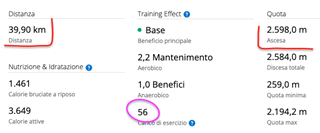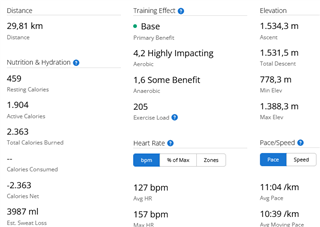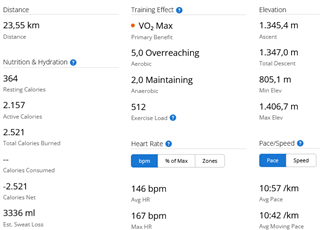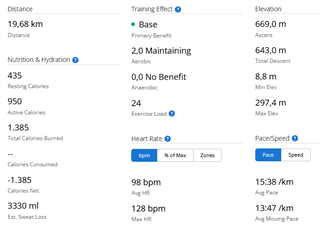I found several discussions even years old about this topic but I found neither solutions nor explanations.
If this is a BUG it is time to fix it or in any case it is necessary to update the method of calculating the training load associated with different activities. The incorrect calculation provides misleading data for cross training.
On Halloween night I went on a 39 km Hike and 2500 m d+ with a calculated training load of 56.
It is a ridiculous offense and an outrage to the perception of fatigue and the management of cross training if I consider that the same Garmin Instinct 2X calculates a Training Load of 97 for 45 minutes of Boludering or a Training Load of 140 for 45 minutes of slow swimming or even 150 for 11K of running in Z2.
What response from Garmin on these issues?





